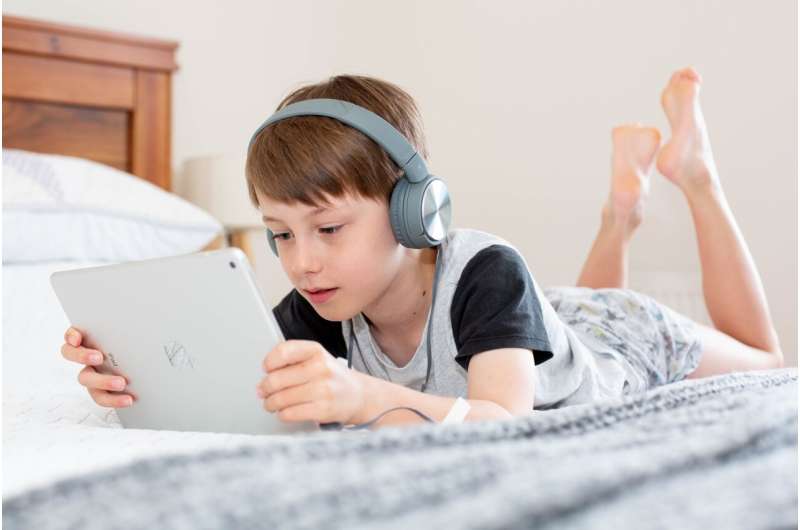
School-aged children who spend more time in front of screens are only slightly more likely to have attention disorders, disturbed sleep or lower grades and are no more likely to suffer from depression and anxiety, finds one of the largest studies to date to explore how screen time impacts youth.
The research, published Sept. 8 in the journal PLOS ONE, also revealed a potential upside to the oft-maligned devices: Kids who spent more time with screens had more close friends.
“These findings suggest that we should be mindful of screens, but that screen time is likely not inherently harmful to our youth,” said lead author Katie Paulich, a Ph.D. student in the Department of Psychology and Neuroscience.
For the study, Paulich and colleagues at the Institute for Behavioral Genetics, assessed data from the ongoing Adolescent Brain and Cognitive Development study, the largest long-term study of child health and brain development ever conducted in the United States.
They analyzed information from a diverse national sample of 11,800 9- and 10-year-olds, including questionnaires about screen time, parental reports of behavioral issues and grades, and mental health assessments.
On average, boys spent about 45 minutes more daily with screens than girls, topping out at nearly five hours daily on weekends and four hours on weekdays.
Boys and girls used screens differently, with boys spending twice as much time with video games, while girls spent more time engaging with social media. (The data, collected prior to the COVID-19 pandemic, did not include screen time associated with homework or online learning).
Like previous, smaller studies, the research found that children who spent more time in front of screens tended to sleep worse, get poorer grades and show more ‘externalizing’ behaviors (things like ADHD, Conduct Disorder and Oppositional Defiant Disorder).
But compared to other factors shaping their lives, the influence of screen time was minute.
For instance, a child’s socioeconomic status had 2.5 times greater impact on such behavioral outcomes. Of all the influences assessed, screen time accounted for only about 2% of the variation between kids in the outcomes measured.
“A number of papers in recent years have suggested that screen time might be harmful for children, but there have also been some reviews that suggest those negative effects have been overestimated,” said senior author John Hewitt, director of the Institute for Behavioral Genetics. “Using this extensive data set, we found that yes, there are relationships between screen time and negative outcomes, but they are not large and not dire.”
While the study did find associations between screen time and some mental health and behavioral problems, Paulich stressed that this does not mean it caused them. In fact, the reverse could be true.
For instance, parents with children who have a tendency to act out aggressively or lack attention might be more likely to sit them down with a video game. Children who can’t sleep for other reasons might turn to their smartphones to pass the time.
It could be that the type of screen time matters more than the amount, Paulich said. For instance, previous research has found that video games played with others can foster relationships, particularly for boys (who tend to play them more) while binge- watching shows alone can have negative consequences. More research is necessary.
Because the new study looked only at youth aged nine and 10, the findings don’t necessarily apply to older kids. The researchers intend to follow the group over time.
While the American Academy of Pediatrics has established screen time guidelines for children under 5, the authors note that there is not yet an empirically established threshold for what an “acceptable level” of screen time is.
“The picture is unclear and depends on what devices, which activities, what is being displaced, and, I strongly suspect, the characteristics of the child,” said Hewitt.
Source: Read Full Article
